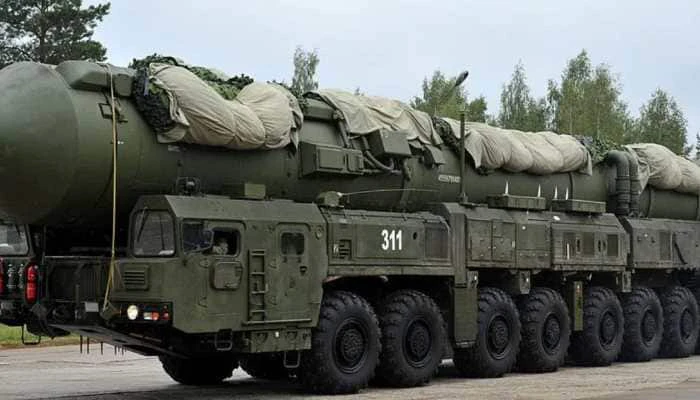New Delhi: The night sky over southeastern Ukraine lit up in a flash just before dawn. A blazing fireball tore across the horizon above the Dnipro River.
Moments later, a deafening blast reduced the massive Yuzhmash defense facility to rubble. Surveillance footage surfaced almost instantly. Open-source analysts went into overdrive. Intelligence agencies scrambled. But the weapon? No one could quite name it until President Vladimir Putin himself confirmed it.
The strike came from Oresnik, a new Russian ballistic missile that does not carry a nuclear warhead but delivers destruction on a similar scale. And unlike nuclear arms, this missile does not trigger global condemnation yet.
In recent months, Russia has been unleashing an arsenal of newer and deadlier weapons on Ukrainian soil. American and European air defense systems some of the most advanced in the world have struggled to intercept them. Among these weapons, ballistic missiles have proven especially lethal. But Oresnik is in a category of its own.
What Makes the Oresnik So Deadly?
It moves faster than almost anything humans have built. Over Mach 10 that is 10 times the speed of sound. It does not melt mid-air, even at 4000 degree Celsius. It pierces the atmosphere like a sword through paper. The warhead can survive brutal reentry temperatures, thanks to layers of heat-resistant ceramic and carbon composites.
More crucially, while most ballistic warheads slow down as they descend, Oresnik speeds up. Even in the thickest layers of earths atmosphere, it maintains hypersonic velocity darting toward its target like a guided meteor. Ukrainian air defense teams watching their radar screens never stood a chance.
Nuclear Power, Without the Nuclear Backlash
The crater left behind at Yuzhmash told its own story. The explosive force resembled that of a small tactical nuke. But no radioactive traces were found. That is what makes Oresnik so terrifying to Western analysts. It delivers devastation at a nuclear level, without crossing the line of treaty violations or triggering automatic NATO responses.
Some military analysts now argue that weapons like Oresnik could eventually replace traditional nuclear deterrents. If hypersonic and ultra-high-temperature missiles can do the same job, why risk global fallout?
A Shift in Russias Military Doctrine
Russia has not only tested Oresnik. It has deployed it. Belarus is expected to host forward bases by the end of 2025. Moscow seems to be rewriting the rules of war slowly replacing its Cold War-era weapons with faster, stealthier and more surgically effective systems.
President Putin recently claimed that Oresnik represents the future of modern warfare. And the implications go far beyond Ukraine. If more countries begin developing similar technology, nuclear bombs might soon look outdated a relic of 20th-century terror.
But that is exactly what makes this so dangerous. A world where conventional-looking missiles can deliver nuclear-style destruction is a world on edge. Lines become blurred. Warnings come too late. And for nations without such systems, the playing field gets narrower by the day.
